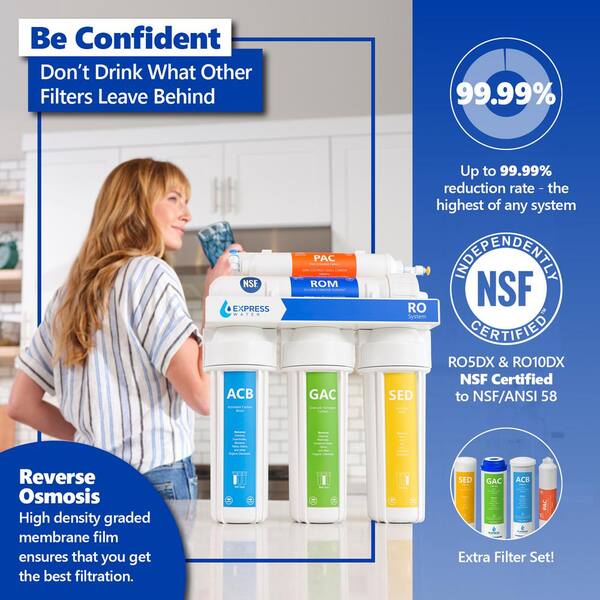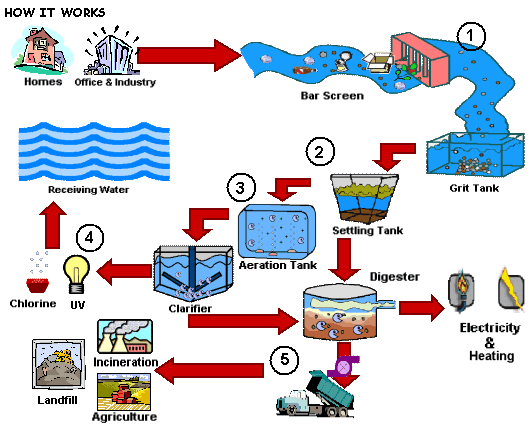The Main Principles Of Hard Water Treatment Systems
Table of ContentsRumored Buzz on Hard Water Treatment SystemsFascination About Hard Water Treatment SystemsHard Water Treatment Systems Fundamentals ExplainedThe 5-Minute Rule for Hard Water Treatment SystemsThe Hard Water Treatment Systems PDFsThe Single Strategy To Use For Hard Water Treatment Systems
In this blog site, we will cover the four kinds of water treatment plants, just how they function and the many industrial applications of each type. Let's get begun! Kinds Of Water Therapy Plants 1. Wastewater Therapy Plant (WWTP) Wastewater is the water that originates from water utilized in residential, farming, industrial in addition to medical or transport tasks.on the other hand, comes from production, industrial and also commercial activities lugged as well as has a totally different composition than sewer water. How does it function? The initial step in this water therapy plant is that the wastewater drains to the plant with the assistance of gravity with the primary sewer system.
In this stage, the water moves with the gravel chamber to remove any kind of grit. The gravel is then dealt with at the dump. The water then transfers to the bar displays which remove big items. These are program screens. Next off, the great displays eliminate smaller sized objects such as undigested foods, or suits, etc.
What Does Hard Water Treatment Systems Do?



This enables the splitting up of water from the semi-solid sludge, whereas the remaining sludge undertakes the mechanical process again for dewatering, that is getting as much water from the sludge as feasible. The sludge then left behind after the food digestion as well as dewatering process is total, is lastly disposed of in the dump.
The 6-Minute Rule for Hard Water Treatment Systems
The last step in wastewater treatment is assessment. hard water treatment systems. This assessment entails checking the contamination degree of the water treated as well as making sure it abides by the highest criteria in order to be released or reused for residential or commercial objectives. Applications: A lot of petroleum refineries or petrochemical in addition to chemical markets produce a big quantity of wastewater as well as require on-site wastewater therapy plants.
The wastewater below streams through screens and into negotiation containers learn this here now that can obtain debris in big quantities. It acts as a pre-treatment as stated over as it takes place prior to three even more aggressive stages- primary, secondary and also tertiary therapy. Key Therapy During this phase, the wastewater relocates right into the clarifiers.
It is the style of these containers that result in settling, that is, the organic strong matter collects at the end of the tank while the lighter matter floats to the top becoming less complicated for removal. The natural matter that clears up near the bottom is called a primary sludge blanket.
What Does Hard Water Treatment Systems Do?
Additional Therapy This treatment phase is composed of aerobic aeration. When this air streams through the aerators, the little openings present, transform them into bubbles and why not try these out they obtain blended with the water column.
This RAS returns right into the key information container and also the bacteria in it assists in breaking down any kind of organic matter in the sewage. Once RAS has completely experienced both the main as well as additional information basins continually, i. e numerous times, it is become waste-activated sludge (WAS). The WAS after that does not go back to the primary information container but instead relocates to the protected storage tanks, likewise referred to as aerobic sludge digesters.
Finally, the remaining sludge relocate to the dewatering center which contains dewatering storage tanks where the plant utilizes belt presses to squeeze any type of staying water out of the sludge (hard water treatment systems). Tertiary Therapy Tertiary therapy follows the process of both primary as visit well as secondary procedures but also additionally includes mechanical as well as photochemical procedures.
What Does Hard Water Treatment Systems Do?
Here the emphasis is offered to physical methods such as screening, sedimentation, filtration, information etc. The objective of this is to eliminate as much strong physical matters as possible before sending out the effluent for more therapy. This stage includes the removal of solid waste as well as raw material. Below chemicals are included in break down any strong and chemical waste.
There are 2 kinds of resins- one is an anion one while the various other is a cation one. hard water treatment systems. These former resins launch hydroxyl ions which are negatively charged while the cation resins release hydrogen ions that are positively billed. The cation-exchange materials bring about conditioning of water, the anion-exchange cause the removal of nitrate from wastewater as well as the combination of both the anion as well as cation exchange eliminates essentially every ionic pollutant existing in the feed water with a process called deionization.
Applications: Demineralization results in the total elimination of minerals from the water and is typically used in sectors that call for water with high levels of pureness, as an example- makeup or feed water in high-pressure boilers, the food as well as beverage market, and also procedure streams used in the production of electronics. They are additionally used in markets for the generation of steam, power and air conditioning.
The Facts About Hard Water Treatment Systems Uncovered
Reverse Osmosis (RO) Water Treatment The principle of reverse osmosis (RO) operates on the filtration approach that causes the removal of a a great deal of impurities and also impurities from wastewater by applying stress to it when it is on one side of a membrane. How does it function? This water therapy plant functions by utilizing a high-pressure pump that boosts the pressure on the salt side of the RO as well as forces the water throughout the semipermeable RO membrane layer (which permits some atoms as well as particles to pass yet not others), leaving virtually 95%-99% of liquified salts in the deny stream.